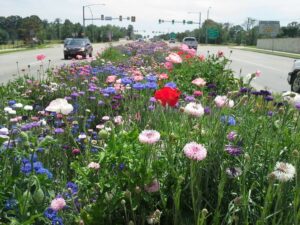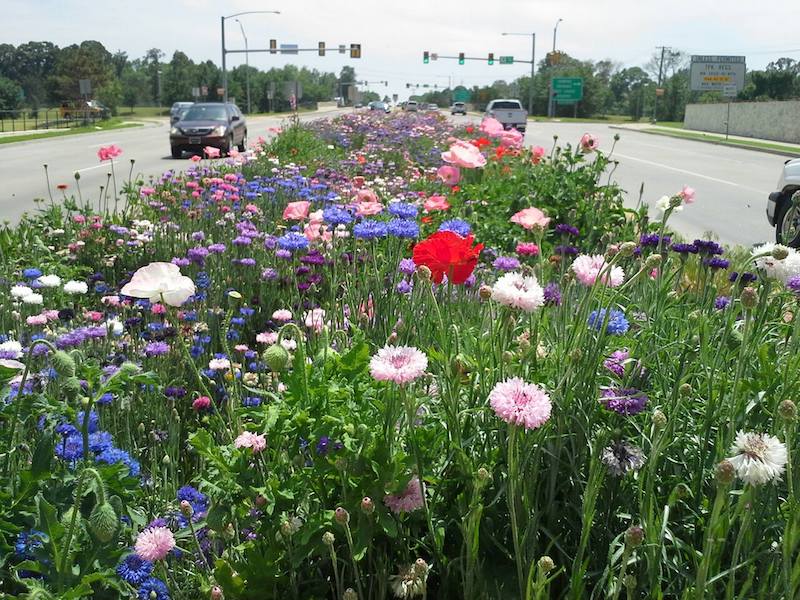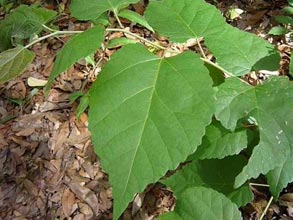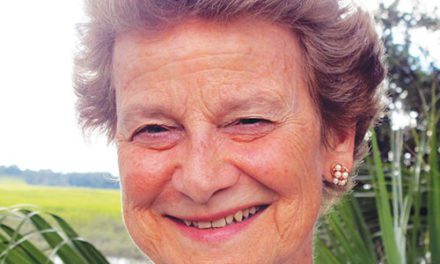 I was fortunate to spend two weeks in Scotland – probably my favorite place in the world besides the Lowcountry. We enjoyed cool weather, played 90 holes of golf at some magnificent golf courses, met wonderful people, and saw some beautiful scenery. One of the things that struck me, especially because I had not been in Scotland since before Covid, was the amount of wilding and rewilding that is taking place. What are wilding and rewilding? Wilding is allowing a patch of ground to return to its wild natural state such as a wildflower meadow or even a bramble patch. This provides visual interest as well as a place for wildlife to inhabit and get their food. It can be large or small such as the inside of a traffic circle or round-about as they call them in Britain. Rewilding involves the introduction of species that had originally been in that location but was lost usually due to human intervention. The reintroduction of wolves to Yellowstone or bringing in native plant species that might have been there originally is an example of rewilding. Often the creation of a wildflower meadow involves both concepts as the land is allowed to return to a wild state with native grasses and weeds. Wildflower seeds might then be planted to increase the biodiversity.
I was fortunate to spend two weeks in Scotland – probably my favorite place in the world besides the Lowcountry. We enjoyed cool weather, played 90 holes of golf at some magnificent golf courses, met wonderful people, and saw some beautiful scenery. One of the things that struck me, especially because I had not been in Scotland since before Covid, was the amount of wilding and rewilding that is taking place. What are wilding and rewilding? Wilding is allowing a patch of ground to return to its wild natural state such as a wildflower meadow or even a bramble patch. This provides visual interest as well as a place for wildlife to inhabit and get their food. It can be large or small such as the inside of a traffic circle or round-about as they call them in Britain. Rewilding involves the introduction of species that had originally been in that location but was lost usually due to human intervention. The reintroduction of wolves to Yellowstone or bringing in native plant species that might have been there originally is an example of rewilding. Often the creation of a wildflower meadow involves both concepts as the land is allowed to return to a wild state with native grasses and weeds. Wildflower seeds might then be planted to increase the biodiversity.
A traffic circle right next to the Culloden Battlefield (for all you Outlander fans) was a mass of yellow flowers. This did not impede visibility for motorists which is a common excuse for not allowing our roadways to grow naturally. The sides of our roadways in South Carolina are often mowed so that nothing is allowed to grow. Shrubs and trees are cleared in a large swath away from the roadbed. In the few areas where the roadsides are allowed to flourish naturally, there can be a profusion of wildflowers – black-eyed Susan, wild asters, goldenrod, clover, and mullein. I noticed along parts of route 278 that highway crews have sprayed shrubs and trees with some sort of powerful herbicide and they are an unsightly brown. It is nice to see that Bluffton has planted the median strip of 278 that runs through its jurisdiction.
If you travel through other states on major highways, you can often see the median strip planted with flowers, usually natives. North Carolina does this on routes 95 and 77. Not so South Carolina. Perhaps state monies are used up in cleaning the roads from debris and trash.
A few hefty fines might discourage those open trucks from spewing their contents onto the roads—both dangerous and unsightly.
Enough of my pet peeve. How can we in our own ways, wild or rewild and increase our biodiversity? Unless you have strict POA regulations, allow a section of your yard to just go wild.
You will probably get lots of yaupon holly, wax myrtle, grasses, and maybe some smilax vines. The birds will be very happy. You can decrease the size of your lawn and increase the number of flowers and/or ornamental grasses in your yard. There are recent studies being done that planting any kind of flowering plant is beneficial for pollinators. Perennials are sustainable because they come up every year. Try seeds of annuals for summer color and make bees and butterflies happy. No room in your yard or no yard? Plant a container with flowers.
My own experiment with wilding did not go so well, I will be the first to admit. I set off a corner of my yard to let go to native grasses. I had some black-eyed Susan and native St. John’s wort come up and was thrilled. Enter the mow and blow guys. They mowed the entire area down. They had never done that before. I put a fence around it. The following week, they lifted the mower over the fence and mowed it down again. I tried to communicate, but they are different workers every week. I gave up and now have a big log and debris pile in one corner for the wildlife. I certainly do have plenty of flowers in my garden and a minimum of lawn so at least I do my part in keeping the pollinators happy.
If you live in a community with some common land, see if you are fortunate enough to convince the powers-that-be to just leave it fallow and see what happens. After seeing what works in Britain on common land, traffic circles, and along roadways, it is certainly something that we can try here. Go a little wild with wilding.









